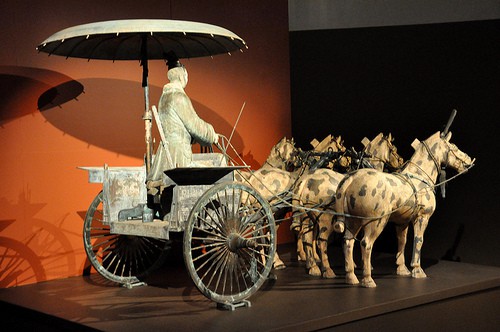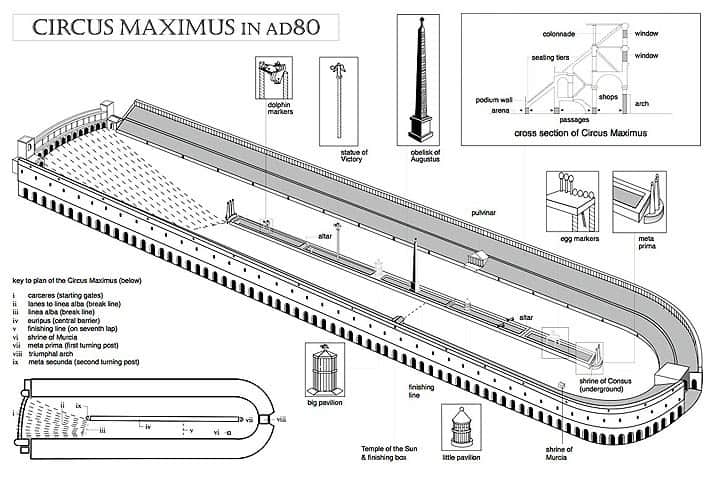The History of Transportation Pt. 2
The two-wheeled chariot was the next progression in the development of transportation after the wheel was invented. It was probably first used in royal funeral processions, later being adapted for warfare and racing.
The two-wheeled chariot was first used in Sumeria around 3000 BC and was most prevalent during the Bronze and Iron Ages as the main form of sophisticated warfare. The invention of the spoked wheel allowed chariots to be built even lighter for agility in war, while not sacrificing stability and strength. Use of the chariot spread through the Middle East, into Asia Minor and Greece, and was known in Northern Europe by 1500 BC.

However, with the popularization of horseback riding by 1000 BC, the chariot became much less of a military necessity, being replaced by mounted calvary. Chariots continued to be used for leading processions, hunting, and racing. The Romans were especially known for chariot racing, continuing to hold them to great popularity until the sport’s decline in the 6th century. In triumphant processions, chariots were drawn by animals such as dogs, tigers, and ostriches, or even as many as ten horses. The famous Circus Maximus stadium was the largest chariot racing arena in ancient Rome, seating 250,000 people–a quarter of the city’s population.
Pop Culture:
- Scythed Chariot: War chariot with blades mounted on both ends of the axle. Scythed chariots are used in the films Ben Hur, Gladiator, Solomon and Sheba and Alexander.
- The Chariot (Tarot Card): Often, the Chariot card shows up when there is an obsession about work, a question about goals, or an issue of over-achieving. When a person is obsessed with climbing the ladder of success – the Charioteer is the one cracking the whip behind the scenes. The Chariot also embodies motion. Often we pull this card when we are traveling physically, or moving in an emotional direction. It’s usually a fast motion too. If we want to get somewhere fast, or a quick change of pace is coming – most assuredly the Chariot will appear in the reading. (from tarotteachings.com)
- Helios, the Greek god of the sun, was imagined as a handsome young man “crowned with the shining aureole of the sun.” He drove the chariot of the sun which determined the course of the sun during the day; Homer described Helios’s chariot as drawn by “solar steeds” (Iliad xvi. 779). The most famous myth associated with Helios is that of his son Phaeton who attempted to drive the sun chariot to prove that his father was the god of the sun, but instead lost control and set the earth on fire.

Interesting facts:
- Origin of the word chariot: The Latin word carrus
- Obsolete terms for chariot: chair, charet, wain
- Sanskrit word for chariot: ratha, which was the origin of the word roto (‘wheel’)
- Chariots are also frequently mentioned in the Bible (the Old Testament) by the prophets as a symbol glory and strength.
- Circus is the Latin word for a chariot racing-track or hippodrome.
Photo Credit: Thomasz1950, Kevin H.

